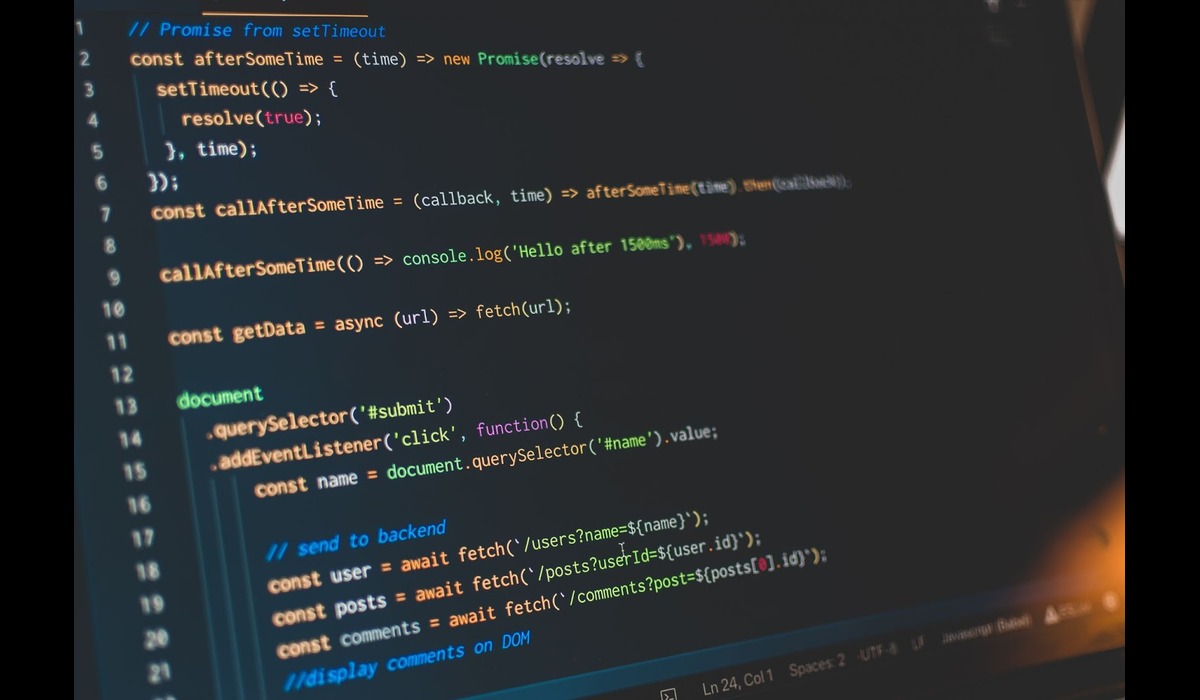1. Understanding Infinity in Mathematics vs. JavaScript
Before diving into math infinity javascript specifics, it’s helpful to understand infinity in its mathematical sense. Mathematically, infinity (∞) refers to something that is unbounded or limitless. It’s not a number per se but an idea that something grows indefinitely. Infinity doesn’t work like other numbers—it’s an abstract concept, which makes its representation in programming languages both useful and challenging.
In JavaScript, infinity isn’t an abstract concept; it’s an actual value represented by the Infinity keyword. This makes it unique among programming languages. Infinity in JavaScript can be produced in various ways, including dividing by zero, working with extremely large numbers, or simply using the built-in Infinity property math infinity javascript.
Quick Mathematical Example
In math:
- 10\frac{1}{0}01 is considered undefined or infinite.
- The sum of any finite number with infinity is still infinity.
In JavaScript, however, operations that might produce infinity are handled directly, providing programmers with a way to manage limitless values in a more tangible way.
2. How to Use Infinity in JavaScript
In JavaScript, math infinity javascript is a global property that holds a special numeric value representing infinity. There are also other interesting global properties like -Infinity, representing negative infinity. Here’s a basic example:
javascriptCopy codeconsole.log(Infinity); // Output: Infinity
console.log(-Infinity); // Output: -Infinity
Producing Infinity
Infinity can be produced through various math infinity javascript mathematical operations. Here are a few examples:
- Division by Zero:javascriptCopy code
console.log(1 / 0); // Output: Infinity console.log(-1 / 0); // Output: -Infinity - Operations on Large Numbers: JavaScript has a maximum representable number (
Number.MAX_VALUE). Anything beyond this value is treated as infinity.javascriptCopy codelet largeNumber = Number.MAX_VALUE * 2; console.log(largeNumber); // Output: Infinity
Built-in Infinity Constant
You can directly reference infinity in your code by using the built-in Infinity constant:
javascriptCopy codelet infValue = Infinity;
console.log(infValue); // Output: Infinity
console.log(infValue + 10); // Output: Infinity
3. Working with Infinity in JavaScript Math Functions
JavaScript’s Math object also interacts with infinity math infinity javascript in interesting ways. Here are some examples of how the Math object handles infinity:
- Math.pow: Raising a number to a very high power can produce infinity.javascriptCopy code
console.log(Math.pow(10, 1000)); // Output: Infinity - Math.sqrt: The square root of negative infinity is
NaN(Not a Number), while the square root of positive infinity remains infinity.javascriptCopy codeconsole.log(Math.sqrt(Infinity)); // Output: Infinity console.log(Math.sqrt(-Infinity)); // Output: NaN
Infinity Comparisons in JavaScript
Infinity in JavaScript behaves in ways that make it useful in comparisons math infinity javascript. For example:
javascriptCopy codeconsole.log(Infinity > 1000); // Output: true
console.log(Infinity > Number.MAX_VALUE); // Output: true
console.log(-Infinity < -1000); // Output: true
This allows us to use infinity as a comparison benchmark. Since any number compared with infinity is always smaller, and any number compared with negative infinity is always larger, Infinity and -Infinity can serve as upper and lower bounds in algorithms.
4. Common Applications of Infinity in JavaScript
Infinity has practical uses in JavaScript programming, math infinity javascript especially in algorithms and edge case handling. Here are some scenarios where infinity might come into play:
a) Setting Boundaries in Algorithms
When searching for minimum or maximum values in a list, you can initialize variables to Infinity and -Infinity to ensure any number in the list will replace these initial values.
Example:
javascriptCopy codelet numbers = [4, 5, -1, 7, 2];
let max = -Infinity;
let min = Infinity;
for (let num of numbers) {
if (num > max) max = num;
if (num < min) min = num;
}
console.log(max); // Output: 7
console.log(min); // Output: -1
b) Error Handling
Sometimes, operations may yield results math infinity javascript that are impossible or undefined, like dividing by zero. Checking if a result is Infinity can help prevent errors or unexpected results in further calculations.
Example:
javascriptCopy codelet result = 10 / 0;
if (result === Infinity) {
console.log("Division by zero detected.");
}
c) Mathematical Functions and Calculations
When working with functions that grow indefinitely, like exponential functions or recursive calculations, infinity can be useful as a threshold or stopping point.
5. Special Cases and Limitations of Infinity in JavaScript
While infinity is useful, it also has limitations in JavaScript.math infinity javascript Let’s explore some of these limitations and edge cases:
a) Infinity with Arithmetic Operations
While infinity behaves as expected in most operations, it does have a few quirks:
- Infinity + Infinity: This remains
Infinity. - Infinity – Infinity: Results in
NaN, as this is mathematically undefined. - Infinity / Infinity: Also results in
NaN, due to undefined behavior.
Example:
javascriptCopy codeconsole.log(Infinity - Infinity); // Output: NaN
console.log(Infinity / Infinity); // Output: NaN
b) Precision and Floating-Point Limits
JavaScript handles numbers as 64-bit floating-point values, meaning there’s a limit to its precision with very large or very small numbers. At some point, extremely large numbers will be represented as Infinity, regardless of their actual value. This can result in unexpected behavior in calculations that rely on high precision.
Example:
javascriptCopy codelet largeNum = 1e308 * 2; // Exceeds maximum number limit
console.log(largeNum); // Output: Infinity
6. Checking for Infinity in JavaScript
JavaScript provides a simple way to check if a value is infinity. The Number.isFinite() method returns false for infinity and NaN, and true for any other number.
Example:
javascriptCopy codeconsole.log(Number.isFinite(Infinity)); // Output: false
console.log(Number.isFinite(-Infinity)); // Output: false
console.log(Number.isFinite(100)); // Output: true
Another way to check for infinity directly is by comparing the value with Infinity:
javascriptCopy codelet value = 1 / 0;
if (value === Infinity) {
console.log("The value is infinity");
}
7. Infinity and JSON Serialization
Infinity values are not JSON-safe. If you try to serialize an object containing Infinity using JSON.stringify, the result will be null math infinity javascript
Example:
javascriptCopy codelet obj = { value: Infinity };
console.log(JSON.stringify(obj)); // Output: {"value":null}
If you need to send an infinite value in JSON, consider converting it to a string or a placeholder value that can be reinterpreted later.
Conclusion
math infinity javascript serves as a unique tool, allowing developers to manage limitless values within a codebase. From initializing extreme boundary values to handling edge cases and mathematical functions, infinity in JavaScript is both flexible and robust. However, understanding its quirks, limitations, and unexpected behaviors is key to effectively incorporating it into real-world applications. While infinity may often appear daunting, JavaScript’s straightforward handling of this concept enables developers to harness it efficiently, turning abstract mathematics into practical, usable code.










